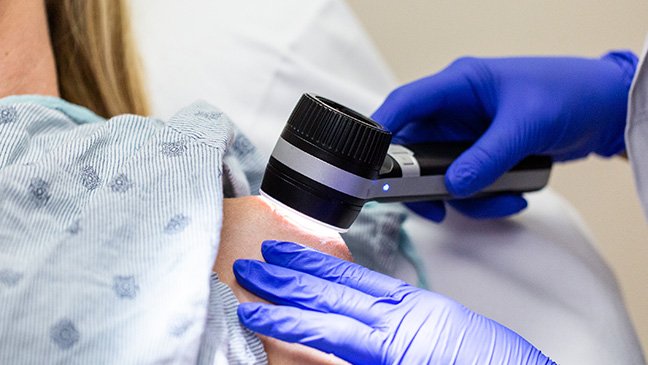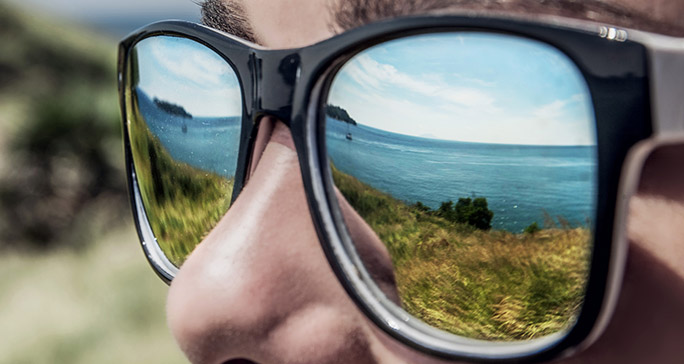Nick Prochak discusses his melanoma treatment
- Diseases
- Acoustic Neuroma (14)
- Adrenal Gland Tumor (24)
- Anal Cancer (66)
- Anemia (2)
- Appendix Cancer (16)
- Bile Duct Cancer (28)
- Bladder Cancer (68)
- Brain Metastases (28)
- Brain Tumor (230)
- Breast Cancer (716)
- Breast Implant-Associated Anaplastic Large Cell Lymphoma (2)
- Cancer of Unknown Primary (4)
- Carcinoid Tumor (8)
- Cervical Cancer (154)
- Colon Cancer (164)
- Colorectal Cancer (110)
- Endocrine Tumor (4)
- Esophageal Cancer (42)
- Eye Cancer (36)
- Fallopian Tube Cancer (6)
- Germ Cell Tumor (4)
- Gestational Trophoblastic Disease (2)
- Head and Neck Cancer (6)
- Kidney Cancer (124)
- Leukemia (344)
- Liver Cancer (50)
- Lung Cancer (288)
- Lymphoma (284)
- Mesothelioma (14)
- Metastasis (30)
- Multiple Myeloma (98)
- Myelodysplastic Syndrome (60)
- Myeloproliferative Neoplasm (4)
- Neuroendocrine Tumors (16)
- Oral Cancer (100)
- Ovarian Cancer (170)
- Pancreatic Cancer (166)
- Parathyroid Disease (2)
- Penile Cancer (14)
- Pituitary Tumor (6)
- Prostate Cancer (144)
- Rectal Cancer (58)
- Renal Medullary Carcinoma (6)
- Salivary Gland Cancer (14)
- Sarcoma (236)
- Skin Cancer (294)
- Skull Base Tumors (56)
- Spinal Tumor (12)
- Stomach Cancer (60)
- Testicular Cancer (28)
- Throat Cancer (90)
- Thymoma (6)
- Thyroid Cancer (98)
- Tonsil Cancer (30)
- Uterine Cancer (78)
- Vaginal Cancer (14)
- Vulvar Cancer (18)
- Cancer Topic
- Adolescent and Young Adult Cancer Issues (20)
- Advance Care Planning (10)
- Biostatistics (2)
- Blood Donation (18)
- Bone Health (8)
- COVID-19 (362)
- Cancer Recurrence (120)
- Childhood Cancer Issues (120)
- Clinical Trials (624)
- Complementary Integrative Medicine (24)
- Cytogenetics (2)
- DNA Methylation (4)
- Diagnosis (230)
- Epigenetics (6)
- Fertility (62)
- Follow-up Guidelines (2)
- Health Disparities (14)
- Hereditary Cancer Syndromes (122)
- Immunology (18)
- Li-Fraumeni Syndrome (8)
- Mental Health (118)
- Molecular Diagnostics (8)
- Pain Management (62)
- Palliative Care (8)
- Pathology (10)
- Physical Therapy (18)
- Pregnancy (18)
- Prevention (892)
- Research (390)
- Second Opinion (74)
- Sexuality (16)
- Side Effects (604)
- Sleep Disorders (10)
- Stem Cell Transplantation Cellular Therapy (216)
- Support (404)
- Survivorship (322)
- Symptoms (184)
- Treatment (1772)
Staying positive in the face of uncertainty
BY Nick Prochak
3 minute read | Published November 30, 2018
Medically Reviewed | Last reviewed by an MD Anderson Cancer Center medical professional on November 30, 2018
Before I was diagnosed with stage III melanoma in August 2017, I used sunscreen the way I think a lot of people do: I applied it once whenever I went to the pool or beach, and then I’d sweat it all off and end up getting burned. I also played hundreds of rounds of golf over the years, but never once thought about applying sunscreen.
I’m a pretty outdoorsy guy and I grew up playing sports. So, it’s hard for me to limit my time outside. But the scar from my surgery is on my right forearm, and I can’t take a swing now without thinking about what I’m doing to stay cancer-free. So I wear a lot of hats and long-sleeve T-shirts. I apply sunscreen most days. And when I play golf, I reapply sunscreen before the round and at the turn.
The importance of regular skin exams
I’ve always tended to be pretty freckly, so I’ve gotten regular skin exams since I was a kid. Growing up, my mom made the appointments for me. After college, I kind of let them lapse.
Still, the mole that turned out to be melanoma hadn’t been there eight months before when I finally went in for my regular exam, so it must have grown and spread pretty rapidly. There really wasn’t much to it. And there’s not any one bad burn I can point to that might have caused it.
Even my dermatologist wasn’t too concerned. But she shaved off part of it and sent it in for a biopsy.
Deciding what to do after my melanoma diagnosis
When my then-fiancé and I found out that the mole was actually melanoma, the diagnosis kind of took our breath away. I was only 30 at the time, and we were preparing for our spring wedding. Cancer was the last thing we thought we’d have to deal with.
After the shock wore off, we got a referral to a local surgeon here in Atlanta. He removed the rest of the mole and three adjacent lymph nodes to see if the cancer had spread.
It had. Two weeks later, I had 26 additional lymph nodes removed from my right armpit. Only one of them proved cancerous, but that meant my melanoma was considered stage III, which increased the likelihood that it could come back. I had to decide what to do next.
Why I came to MD Anderson for immunotherapy treatment
I had several treatment options after the surgery, including clinical trials, but I didn’t know what to do. I’d reached out to several well-known cancer centers, including one in my own backyard. But after meeting with Dr. Patrick Hwu at MD Anderson, I knew we were in the right place.
Instead of presenting us with three or four options, Dr. Hwu recommended an immunotherapy drug called Nivolumab. He stated definitively that this was the best plan for us. And just the level of confidence he expressed gave us a sense of peace that we hadn’t experienced since I was first diagnosed.
‘We’re going to be OK’
I started my immunotherapy treatments at MD Anderson in December 2017. And until August 2018, my scans were clear. I had a few lymph nodes in my neck recently that needed to be checked out, so I had surgery to remove them under Dr. Richard Royal. He’ll determine if they’re part of the original cancer or something else.
In the meantime, my family and I are continuing to live the healthier lifestyle we’ve adopted since my diagnosis — including using more sunscreen. Not having all the answers is hard. But regardless of what happens, we know we’re going to be OK and get through this. Cancer is a part of our life, but it’s not our whole life.
Request an appointment at MD Anderson online or by calling 1-855-946-3759.

Cancer is a part of our life, but it’s not our whole life.
Nick Prochak
Survivor






